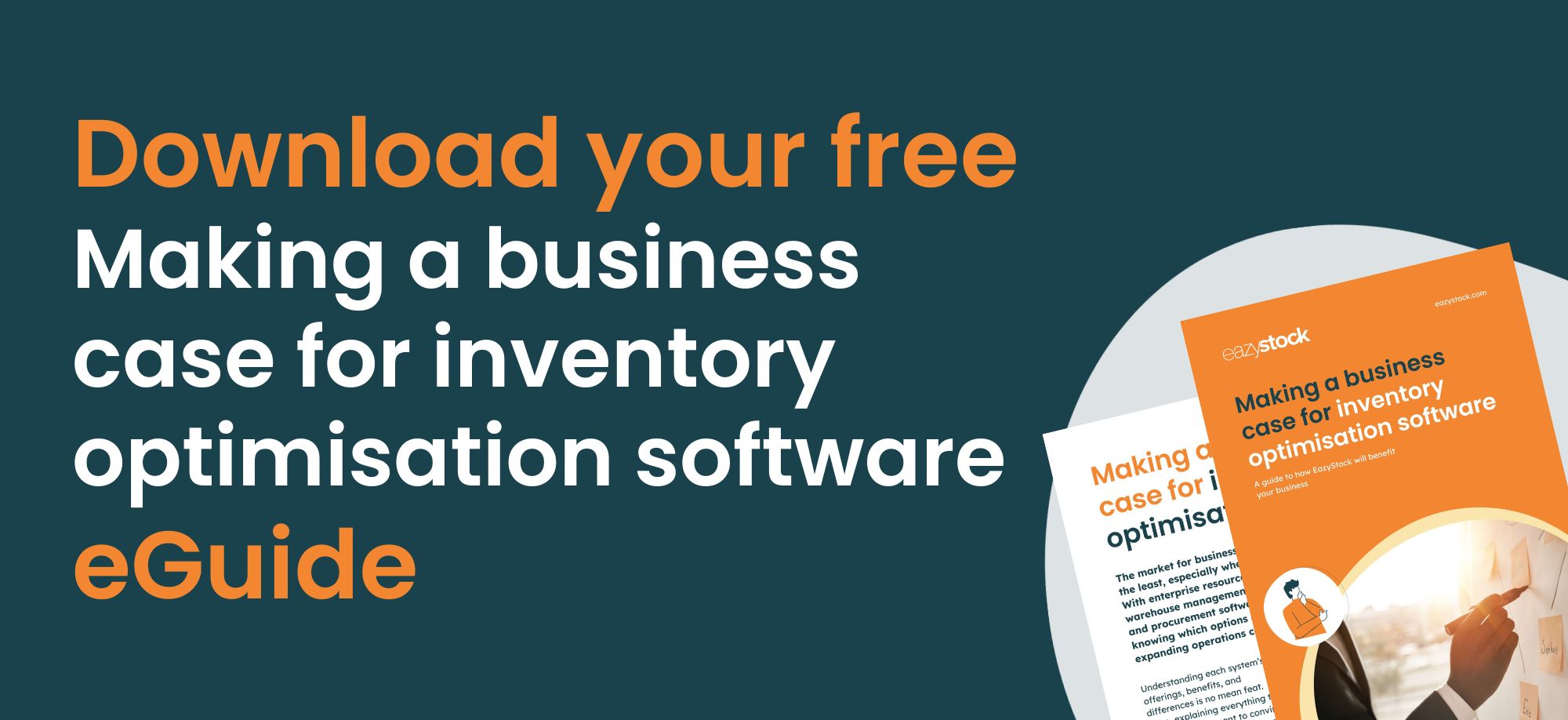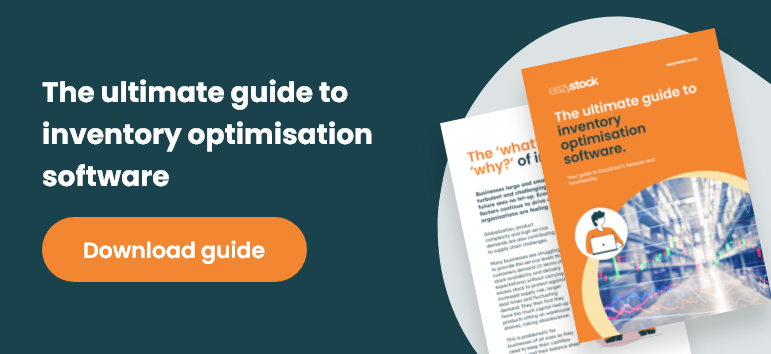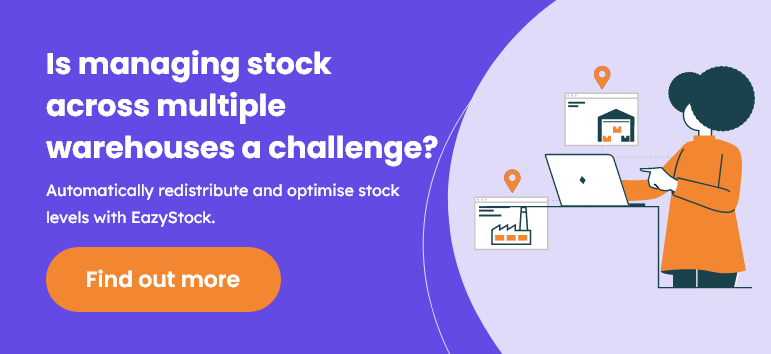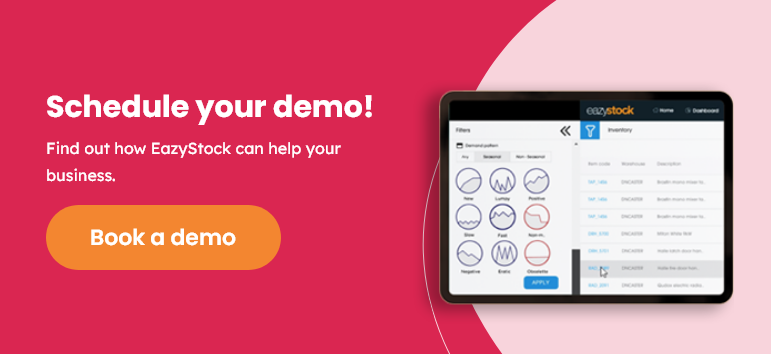7 Ways ERP inventory management add-ons can save time and money
How ERP add-ons can add value to your current system’s functionality
Enterprise Resource Planning (ERP) systems are excellent for improving efficiency right across your organisation by collecting and analysing data, processing orders and managing finances. While warehouse management systems (WMS) play an important role in controlling stock and warehouse operations.
Both, however, have limitations when it comes to specialist functionality, such as automated document signing, online payments, or inventory optimisation. ERP add-on software plays a major role here, as it can significantly enhance your business system’s functionality. As most ERP add-ons are cloud-based, they are easy to implement, so you can see the benefits immediately.
In this post, we’ll focus on the benefits of inventory optimisation ERP add-on software in terms of the cost and resource savings it can bring to your business. Inventory optimisation is the art of balancing inventory investment against ensuring high levels of fulfilment and stock availability. It allows you to automate your inventory planning and replenishment activities and optimise your stock levels to make each stage of your supply chain more cost-efficient. Read our blog post ‘what is inventory optimisation’ for more info.
There are many warning signs that you need to automate your demand and inventory planning activities, such as experiencing a high number of stockouts, holding too much excess stock or using spreadsheets to carry out replenishment calculations. If you currently experience any of these issues, read on and find out how an ERP add-on can help…
1. Save time and labour costs
Using spreadsheets to calculate your inventory needs and inputting this data back into your ERP is no fun. You can waste a lot of time working out what, when and how much stock to replenish. Plus, manually entered data is prone to errors and as your business grows and the number of SKUs you manage increases, you’ll find that spreadsheets slow down and calculations get more complicated.
An ERP inventory management add-on will save time and resources by automating demand forecasting, stock planning and replenishment calculations, and feeding this data into your ERP.
With stock reordering amounts worked out for you, you can free up time for more strategic decision-making and planning.
In addition, automating your stock management calculations will ensure they’re always based on the latest demand and stock level data without the need for constant manual updates.
2. Reduce stock investment
Many ERP systems are great at inventory control: ordering items, updating stock levels and raising purchase orders. However, they often lack the necessary analytical tools to recommend what and how much stock you should actually carry.
If you consider your current stock levels, can you be sure you have availability to meet customer demand? Additionally, how do you know you haven’t invested too much capital in goods sitting on warehouse shelves?
Optimising your stock levels can lead to increased profitability. If you can lower your inventory levels and improve inventory turnover, you’ll free up working capital (and opportunity costs) and reduce your carrying costs. But you don’t want to do so at the expense of causing stockouts. So the key is to prioritise the SKUs you hold based on their demand and cost to your business.
ERP add-on software, such as EazyStock, will classify each SKU in your warehouse and recommend its ideal stock level, so you can meet fulfilment targets without holding surplus stock.
3. Redistribute stock across multiple locations, instead of buying more
Businesses with more than one warehouse can take stock optimisation to the next level by optimising inventory levels across all locations. For example, if demand for woollen sweaters is high in one region but low in others, it makes sense to move the sweaters to the warehouse serving the ‘high-demand’ area. This prevents surplus stock from adding up in the other locations. It also lessens the reliance on external supplier networks and frees up working capital.
4. Take full advantage of all sales opportunities
Many ERP inventory management modules use basic rolling average calculations to forecast demand. Often such demand forecasting methods cannot take into account seasonality or trends. And if you fail to spot upcoming sales opportunities, you may not have adequate stock to capitalise on customer demand.
By utilising statistical demand forecasting techniques (provided by inventory optimisation software), you can improve the accuracy of your forecasts and plan for demand peaks. EazyStock is designed to recognise both seasonality and trend patterns, adjusting forecasts daily, which updates your replenishment recommendations. Consequently, you’ll always be able to make the most of demand surges and prevent costly stockouts and backorders.
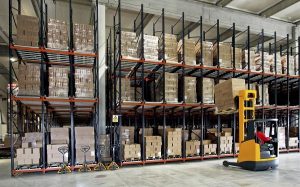
5. Prevent money wasted on excess and obsolete stock
Accurate demand forecasting will also stop a build-up of surplus stock. By tracking the demand for every inventory item in your portfolio, EazyStock calculates its current position in its product life cycle. The risk of excess and obsolete stock is highest as products leave the maturity stage and hit decline. EazyStock will spot these demand changes and adjust reordering parameters accordingly, thus reducing the risk of costly excess and obsolete stock.
6. Reduce the bullwhip effect in supply chain management
The bullwhip effect is when a slight fluctuation in demand at the top of the supply chain has an augmented effect on the demand forecasts further down. For example, if a bike shop sells more of a specific SKU than usual, it may increase its demand forecast and place a larger order from its regional distribution centre (RDC). The RDC may then increase its demand forecast based on the retailer’s new order quantity, not the actual demand. Based on the RDC’s new forecast, the central warehouse may do the same. The result is over-inflated demand forecasts and consequential surpluses in stock at each stage of the supply chain. Like the cracking of a whip, the increase in demand starts small but grows down the line.
EazyStock stops this by producing forecasts based on actual point-of-sale data. This removes the scenario of overinflated stock levels at each stage of the supply chain, preventing money from being tied up in unnecessary stock.
7. Reduce ordering costs
Many suppliers place contractual constraints around order quantities, which can inhibit cost-effective purchasing. Automated stock replenishment software can help by considering these factors when recommending your daily replenishment needs. For example, suppose you have a minimum order quantity t hit, or simply want to fill up a shipping container. In that case, EazyStock will identify the most cost-effective items to add to the order based on upcoming demand requirements.
Advanced ‘price break’ functionality can also help you determine whether ordering larger quantities at a lower ‘price per unit’ will offset the costs of carrying more inventory and the risk of it being surplus to demand.
Enhanced inventory management functionality with ERP add-on software
The EazyStock ERP add-on offers businesses a wealth of cost-saving benefits. It’s not meant as a replacement for your ERP – on the contrary – it’s there to enhance existing inventory management software functionality. EazyStock is easy to set up and works with your ERP, offering additional inventory optimisation features that will save your business time and money. For more information, call our team on 0121 312 2992 or contact us here to discuss your needs and how we can support you.
